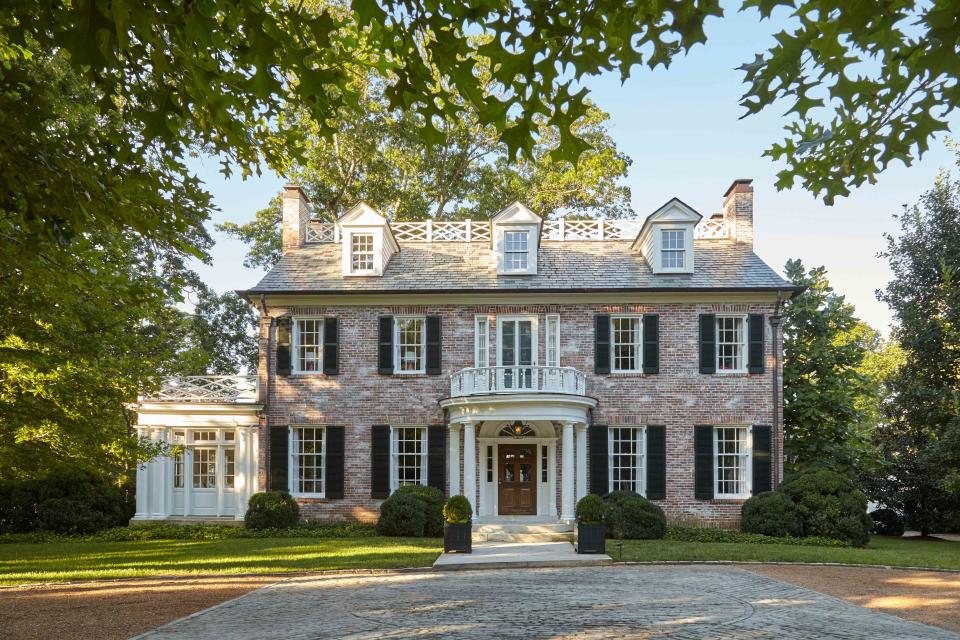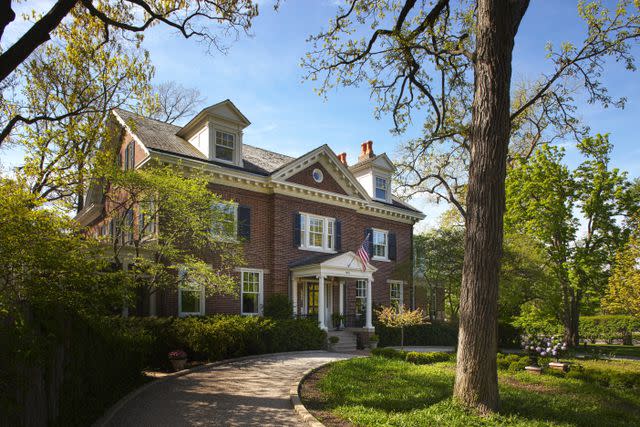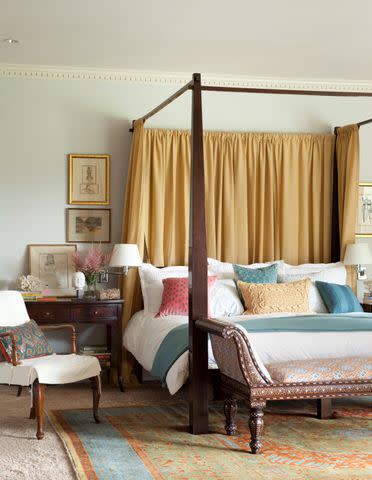Georgian Architecture: Key Features and Design Ideas
- Oops!Something went wrong.Please try again later.
From its perfectly proportioned exterior to its pared-down palette and elegant flourishes, these are the unmistakable calling cards of Georgian architecture.

Emily Followill
Home styles in the United States can vary from coast to coast, region to region, and even from one street to the next. While we are a melting pot of architectural influences, there are a number of house styles from which countless others got their roots. Georgian architecture is the matriarch of them all. While you’ll see many Georgian-inspired design elements on American homes today, its roots go way back—and across the pond, too. Here, we discuss the origins of Georgian architecture, key elements, and how to incorporate this style in your existing home, new build, or even simply into your decor.
History of Georgian Architecture
Up until Georgian-style architecture started hitting the scene, homes in the English colonies had previously been utilitarian-focused folk-style dwellings. Georgian architecture, named after a tetrad of British Kings named George, was developed by English architects and heavily influenced by the Italian Renaissance. By the time it made its way to the colonies, an attention to forms that would point to the area’s growth and rising wealth was a focus. As such, the formal look of Georgian design became highly appealing.
Because traditional Georgian architecture has been around for centuries, its framework has, not surprisingly, also evolved. Today, you can see its influence from coast to coast, whether in expansive, broad-pillared Southern homes to elegant new-builds with traditional proportions and brick facades.

Werner Straube
Key Features
Maggie Griffin of Maggie Griffin Design says there’s no denying one fact about Georgian architecture: It’s all about balance and symmetry. “Georgian architecture is defined by a classic, symmetric façade with balance and proportion, usually made of brick or stone,” she explains. It results in a stately, elegant look that’s defined by its scale and balance. This relates not only to the exterior of the home but the interior as well.
“Typically transom and multi-panel windows create the perfect framework for picture windows and detailed plasterwork often featuring cameos, busts, or neoclassical motifs, adding elegance and grandeur to any space regardless of its size,” says Jill Steinberg, designer, cofounder, and chief operations officer of Toronto-based wallpaper company, Fine & Dandy Co.
Georgian-style rooflines are typically hipped or feature side gables and sometimes the use of dormers. Stone and brick are materials commonly associated with Georgian architecture, though there are also features like cornices, dentils, columns or pilasters, and pediments that can add to the allure.

Edmund Barr
Georgian-Inspired Design Ideas
To help achieve a Georgian-inspired look, consider these three fundamentals: composition, materials, and color.
Georgian-Inspired Composition
Georgian interiors can be classified by their symmetrical proportions. As such, Griffin recommends calling on a balanced design to help get the look. That can be as involved as planning symmetrical doorways and windows if embarking on a new build or renovation, or simply employing a balanced look by using matching end tables and lamps on either side of a classic-looking sofa. Think of art placement, sofa and chair placement, and even how simple decor items like frames, sconces, and more can lend balance and symmetry to the space in a distinctly Georgian way.
Georgian-Inspired Materials
While brick and stone are two of the more popular materials used in Georgian architecture, Griffin says that wood and slate can also be used on the exterior of the home to help achieve the look. That being said, Georgian homes aren’t only defined by their stately curb appeal. Features like trim, moldings, and wood windows within large, balanced rooms will carry the design throughout the interior of the home as well. While the fundamental aspects of the home might be more understated, when it comes to the details, Georgian homes are anything but. Closer inspection will show off dentils, moldings, cornices, and more Renaissance-inspired details that lend a unique and elevated look to the architectural style.
Georgian-Inspired Color Palette
Although natural materials might define the exterior, inside you’ll see a marriage of the ornate and more subdued. “Using muted pastels, earth tones, and an abundance of molding, this era reveres refined and classic silhouettes in its furnishings and decorative elements,” says Griffin. Look for toned-down shades in the blue, gray, green, and burgundy color families to lend a historic feel and reinforce the understated elegance that’s synonymous with Georgian design. Wedgewood blue, dusty pinks, and pale gray greens can all lend a muted look while still imparting a dose of color in the space.
For more Better Homes & Gardens news, make sure to sign up for our newsletter!
Read the original article on Better Homes & Gardens.

